#greek scultpure
Text


Head of Ares
#ares#mars#art#scultpure#sculptures#roman#marble#europe#european#history#ancient greek#borghese#ancient greece#gods#god of war#religion#mythology#religious#ancient rome#roman empire#mythological#religious art
435 notes
·
View notes
Photo

venus and adonis by antonio canova
62 notes
·
View notes
Text
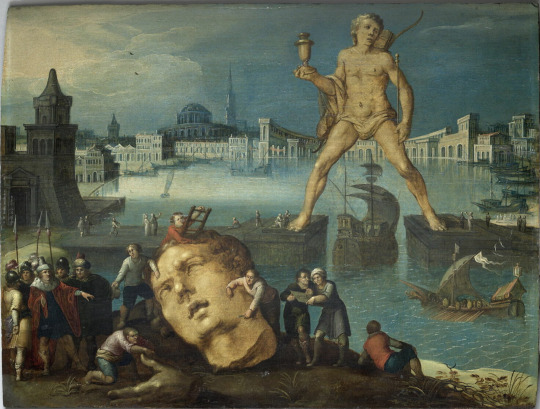
The Colossus of Rhodes
The Colossus of Rhodes was a statue of Helios, the Greek sun God, which stood over the Greek island city Rhodes. Notably known as one of the Seven Wonders of the Ancient World, the Colossus was erected by Chares of Lindos in c. 282 B.C.E. to celebrate the defeat of Demetrius I Poliorcetes, who had besieged the city for over a year.
Made of bronze, the statue was reported to stand at 70 cubits (105-110ft ; 32-33m) tall--about the same height as the Statue of Liberty, and acting as the tallest statue of the ancient world--and took almost twelve years to construct. Presiding over Mandrákion harbour, it is dated back to 1395 C.E. by the writings of an Italian who visited the island that the statue straddled the harbor (see painting above).
Tragically, around 227-225 B.C.E., an earthquake hit the island of Rhodes, snapping the Colossus at the knees. The collapsed statue was left untouched until 653-654 C.E. when *supposedly* Arabian forces, acting under Mu'awiya I, raided Rhodes. Pieces were said to be sold, totaling more than 900 camel loads.

Reconstruction
Ptolemy III offered to help pay towards the reconstruction of this statue, but the Oracle of Delphi made the people of Rhodes believe that Helios was offended, thus the offer met refusal.
Another reason for reconstruction being refused is due to the seismically unstable location Rhodes found itself belonging to. Having multiple devastating earthquakes cemented the unlikeliness that the statue could withstand existing if built again.
Misconception
The misconception towards the Colossus's stance, particularly from medieval interpretations, was disputed by simple explanations in John Lemprière's Bibliotheca Classica (Classical Dictionary). Lemprière states that construction would have blocked the harbor, and when the statue was finally built, builders would've needed to clean everything from the harbor in order to reopen. Additionally presented, when the Colossus met its dismay, it would have blocked the harbor and been left unseen on land (which we know isn't true considering many stories of Rhodes being a tourist destination just to see the fragments of Helios left scattered).
Furthermore, if you apply physics, you'd understand that the weight met with its legs-wide stance would crumple on its own.
The statue of Rhode's patron God is unknown by appearance besides that it may have curly hair and halo of spiked flame due to engravings on Rhodian coins which pictured Helios. The Colossus's pose is disputed, though historians believe Helios hovering his arm near his eyes to block light, attributing this possibility to a nearby temple's relief which shows the God performing the aforementioned action.

Credits
Beginning Piece:
"Le colosse de Rhodes"
by Louis de Caullery
Oil on Panel Painting, before 1622.
Louvre Museum.
Last Piece:
"Colosse de Rhodes"
by Sidney Barclay
Engraving, circa 1875.
Sources Used:
Art In Context
Britannica
Wikipedia (hey, they have good sources listed, I could've lied about what I read and put all of those here instead).
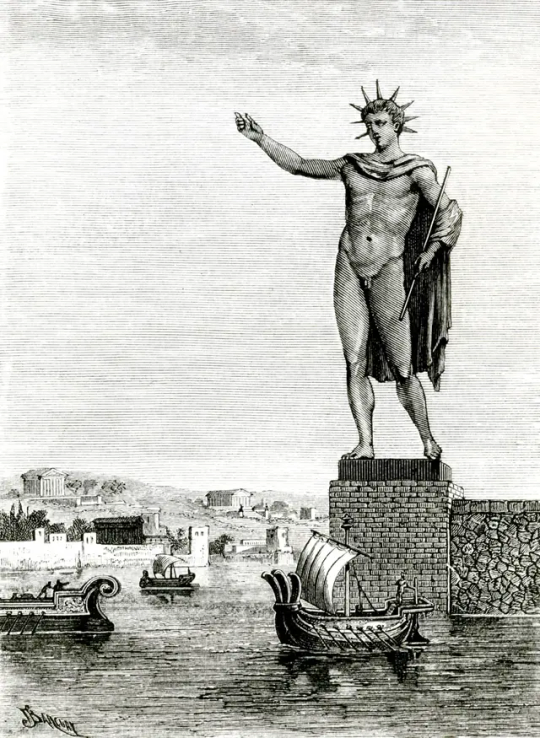
#seven wonders#seven wonders of the ancient world#ancient greece#ancient#colossus of rhodes#statue#scultpure#history#art history#painting#art#greece#rhodes#greek history#greek gods#helios
6 notes
·
View notes
Text

Lionel Scaloni.
Nose and lips of a Greek sculpture 😜!!
#lionel scaloni#hot sportsmen#so hot#dlf#made in argentina#so hot 🔥🔥🔥#scultpure#greek beauty#male beauty
2 notes
·
View notes
Text

Metz (1985) by Lynda Benglis (b. 1941)
10 notes
·
View notes
Text
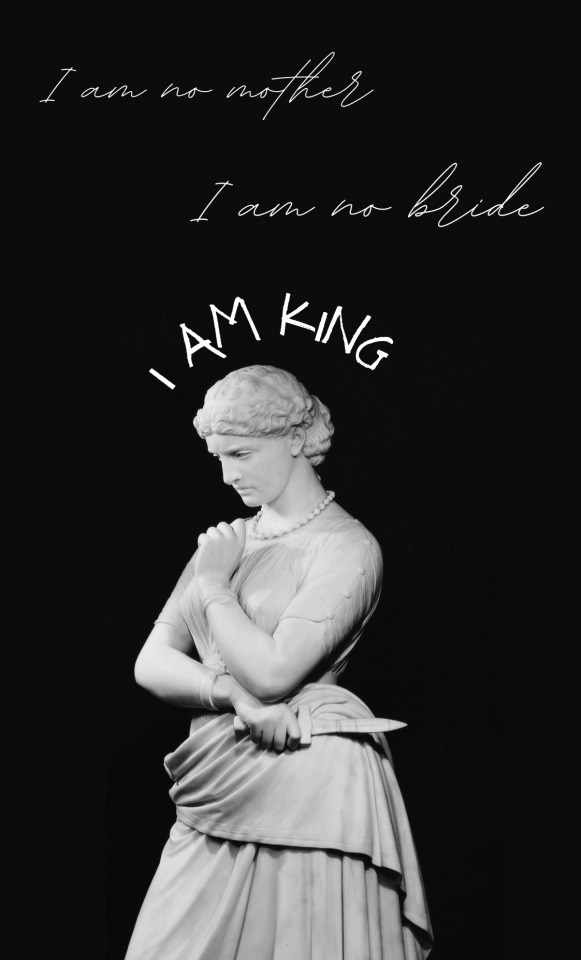
Lyrics - King (2022), Florence + The Machine // Sculpture - Medea (1868), William Wetmore Story
#medea#florence + the machine#american art#William Wetmore Story#mine :)#web weave#greek mythology#euripides#scultpure#lyrics#on womanhood#on girlhood#on power#florence welch#female rage#florence and the machine#mothers and daughters#mothers and sons
12 notes
·
View notes
Text
The rape of Persephone by Hades.

#inspiration#γκρικ ταμπλερ#γκρις#ποιήματα#ποιηση#sad poetry#persefoni#persephone#disney hades#hypnos hades#classical mythology#greek myth retellings#michelangelo#scultpure#sadbeautifultragic#sad thoughts#sad but true#sad night#sad poem#dark academism#dark aesthetic#dark acamedia#dark art#artlovers#artwork#art
13 notes
·
View notes
Photo

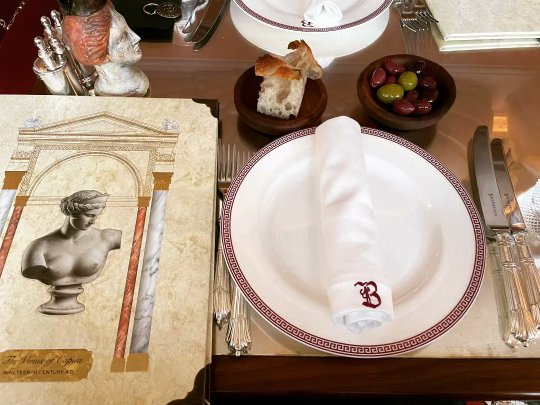




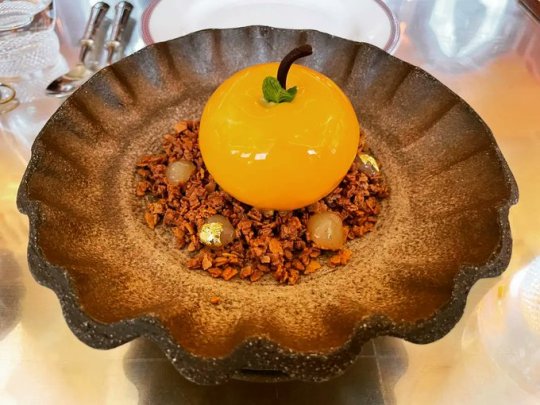
Dinner at mediterranean/greek restaurant Bacchanalia in Mayfair, where magnificent sculptures by Damien Hirst soar above you.
To drink, pina colada and Maenad (raspberry, eucalyptus, white chocolate, greek yoghurt, egg white) mocktails.
Tempura courgette flower with a spicy tomato sauce. Delicious!
Grilled chicken with crispy potatoes. Only the chicken is halal but there are plenty of fish and vegetarian options on the menu.
Grilled sea bream fillet with capers, olives and tomato.
Golden Apple dessert - caramel mousse, fresh apple compote, and crunchy milk chocolate.
Bacchanalia
1-3 Mount St
London W1K 3NA
[view map]
3 notes
·
View notes
Text

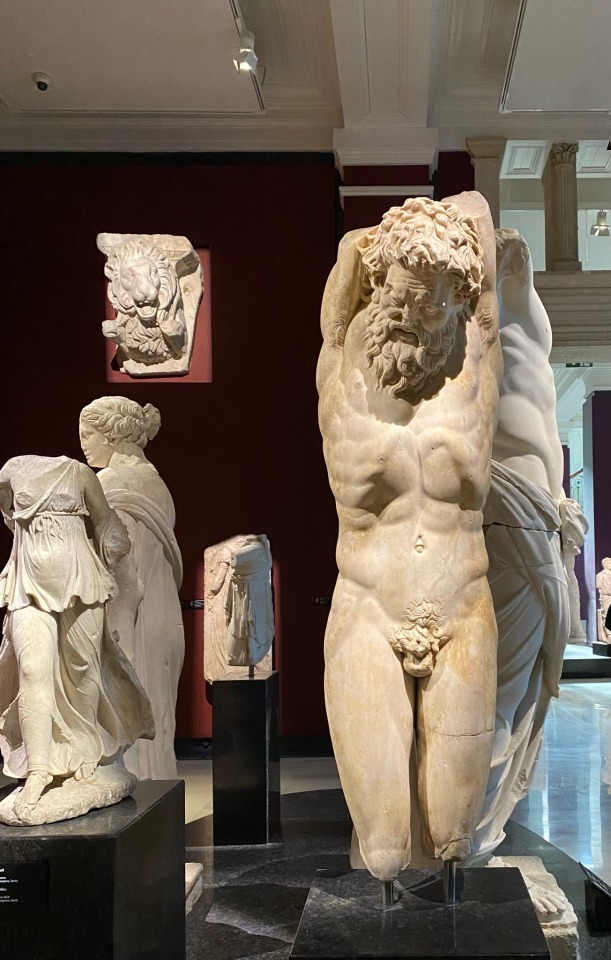
3 notes
·
View notes
Text
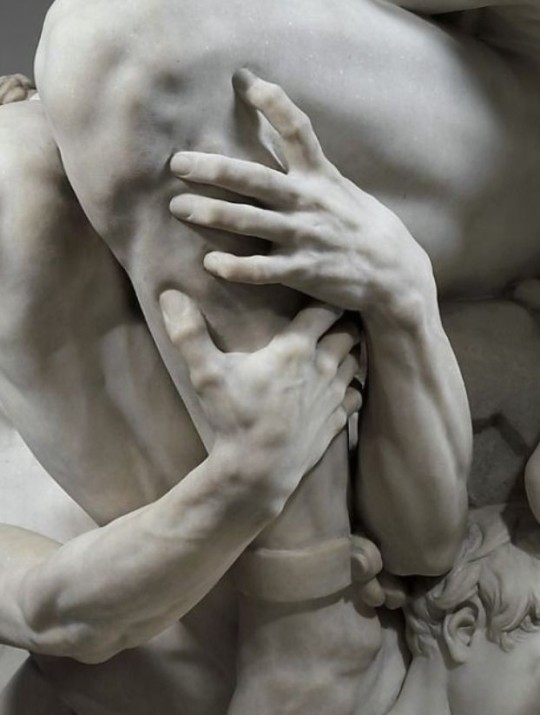
"Ugolino and His Sons" (1865-67) by Jean-Baptiste Carpeaux (1827-1875)
#aesthetic#sculpture#sculpture details#aesthetic blog#jean-baptiste carpeaux#ugolino and his sons#sculpture detail#art aesthetic#greek aesthetic#art#not mine#scultpure#academia aesthetic#academia#dark academia aesthetic
10 notes
·
View notes
Text
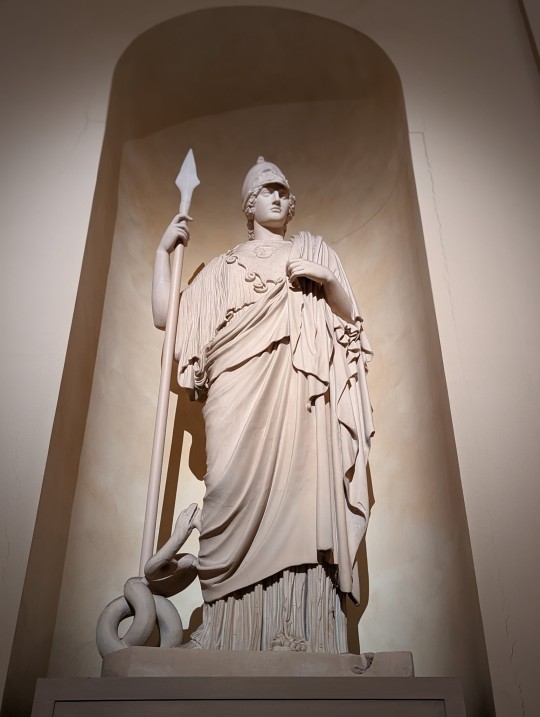



#scultpure#museum of fine arts#boston#greek gods#athena#cyclops#art#travel#tourism#Odyssey#mythology#photography
4 notes
·
View notes
Text




Recently took some photos of my sculptures for my portfolio. I decided to get pictures of Ariadne and Aphrodite from my clay sculptures since they were easier to photograph than most of my favourites. It was so hard to get a good angle for the wire ones.
1 note
·
View note
Link
I think this video highlights the skill of the Ancients and Renaissance sculptors - if it looks difficult by modern standards, imagining how the did it is all that more impressive. When we see sculptures in museums, the “head” artist is usually the only one attributed, but this demonstrates that there are many more heads and hands put together in order to create this, whether with today’s tech or in antiquity, et al.
I learned that a standard “pointing machine” (Pointing_machine) is not able to be used for enlarged or reduced copies of sculpture, but rather for one-to-one copies. Although, there are special pointing machines used for mirroring, enlargement, and reducing. Calipers are generally used to scale models up or down (source).
In the Frilli Gallery video (timestamp 3:22), you can see a sculptor using what looks to be the ‘3-caliper method’ to enlarge the sculpture. It is interesting to me that the marble barely looks anything like the original at this point. At many points of the video, you see a few different sculptors sing this method. To me, this raises the question of “who gets the credit?” Today, you’s expect the credit to be given to any who helped create, but that is not necessarily the case.
In ancient times, I’d expect this process to take infinitely longer. They had the caliper method, but per the article above, the pointing machine was not invented until the 18th century-ish. The Greeks and Romans had similar tools, but imagine having to hand carve the marble AFTER it was mined and carried/dragged to the workshop. It would have taken dozens of craftspeople to finish them. Know the little I do about the way the ancients copied their sculpture, no wonder they did that! To think that the market was so large back then is crazy knowing the “primitive” (I know that’s not the best word, but you get the idea) tools and methods they had. Honestly though, the methods don’t seem to have changed all that much besides silicone and electricity, but those really do help!
1 note
·
View note
Photo

0 notes
Text

Greek Sculpture
Light & Shadow
#aesthetic#post#aesthetic#following#mood#feed#pinterest#grunge#asthetic#intagram#photography#twitter#scultpure#greek#history#art
1 note
·
View note
Text
2020 Huevember

HELIOS — BENEVOLENCE
"The solar deity, even though he was a little out of the way, plays an important role in the daily life of mortals: thanks to the god Helios, plants grow vigorously, harvests are numerous, and above all, daily life is more pleasant. It is thanks to him, and his chariot, that the world turns and regulates itself by gravitating around him. He does not hesitate to take his time and observe with a benevolent air, from the clouds of Olympus, the mortals who swarm with life."
Helios as Yuuto, it is not necessarily an obvious choice, and yet, this kid is so radiant and solar! Really, he has a smile always stuck to his face, it was almost obvious to make him embody Helios!
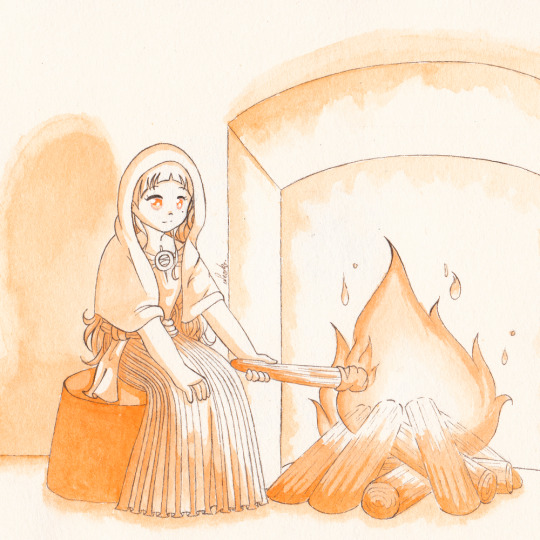
HESTIA — HOSPITALITY
"There is nothing more pleasant than a warm fireplace: a crackling fire in the family hearth, tenderly fanned so that every being who enters the place feels at ease. This is Hestia's role—to make everyone feel at home, no matter the moment. Mortals do not pay attention to the small details that are specific to the magic of the goddess. Her humble heart allows her to appreciate them all in the right way."
Louise in Hestia was a bit of a choice of destiny: she unfortunately doesn't have this chance to have a welcoming home of her own, and it is partly thanks to Hadrian that she will be able to create one. So it was a logical choice for her to take on this role!

HAPHAESTUS — CREATIVITY
"The gods are not spared from the flaws that one might think only mortals have: the ugliness was Hephaestus' one. He was such a filth that he had even been thrown from Olympus! What a disgrace! However, Hephaestus was not only a talentless bugger ... On the contrary. Under his hands, the clay smoothed, bent, took shape ... Thus, he who is known only for his ugliness had undoubtedly created the most beautiful thing: Pandora, the first woman, whose grace was equaled only by the talent of her creator."
The myth of Pandora, or at least her creation, fits Irene and Robyn so well! Robyn has a slight lack of self-confidence, and he loves scultpure. It is quite naturally that he took the features of Hephaestus with Irene to represent Pandora!

HEBE — UNION
"The exchange of vows and the promise of eternal love: for a goddess, whose youth is a source of inspiration for all, it is quite ironic to be the protector of the newlyweds. If in Olympus her discreet and minor place as cupbearer is quickly replaced, in the hearts and blessings of weddings her role is a major one. She then raises her cup to toast this happiness so that it will never be ephemeral."
Hebe is such a minor and little mentioned deity that I thought it fitted well with Katya's character. There is also the whole allusion to marriage: after all, Katya has been lulled by this ideal since she was very young that she would make a perfect little deity all by herself!

ERIS — STRIFE
"Chaos ... There is nothing more beautiful, nothing more inventive than total and absolute chaos. And Eris quickly understood this: a hint of jealousy here, a pinch of envy there ... And there she is, moving and creating a world where everything is cacophony and injustice. An extraordinary chaos where the seed of discord is planted in a wise way!"
Misery as Eris, honestly, it is a choice that is not even debatable: she enjoys stirring up hatred to better entertain herself. And in her work as a hitman, she loves to have fun tormenting her prey in a more creative way ...
✿ My 2020 Huevember with my OCs associated with Greek deities and qualities or flaws! I really loved doing it back then ...
Irene Holmes (OC) is Zonbi's.
Yuuto Iseut Shinkiseki, Louise Elizabeth Warren, Robyn von Toten, Ekaterina von Friedholf & Misery Wellsburth (OCs) are mine.
Art is mine.
#Neoko#Artists on Tumblr#OC#Original Character#Irene Holmes#Yuuto Iseut Shinkiseki#Louise Elizabeth Warren#Robyn von Toten#Ekaterina von Friedholf#Misery Wellsburth#Huevember#Monochrome#Greek Mythology#Greek God#Greek Goddess#Greek Deity#Helios#Haphaestus#Hebe#Hestia#Eris#Drawing#Traditional Drawing#Watercolor#Neoko_OC#Zonbi_OC
11 notes
·
View notes